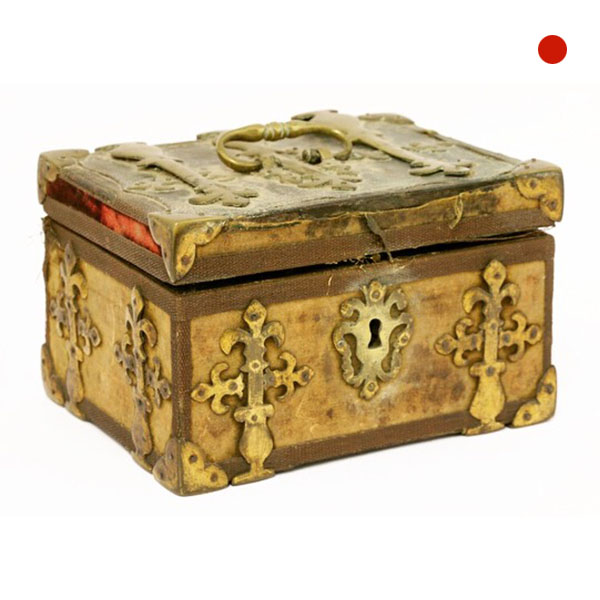
17th-18th Century Silk Covered Strongbox Jewel Casket
SOLD
Request Information
Follow Us
17th-18th Century Silk Covered Strongbox Jewel Casket
Fit for a Queen…
From time to time an object can certainly grab your imagination, this casket of small proportions is no exception. The casket has a lovely hand-written note stating, ‘The jewel box originally belonged to Queen Elizabeth and came direct into the family’. Now, boxes of this form though usually veneered in oysters of Kingwood and
occasionally shagreen, is thought to date between 1675-1700 which would place this box around 100 years too late for the Elizabethan period. It is, however, possible that the casket belonged to Queen Elizabeth and could have been made some 100 years before this style became ‘mainstream’ given the quality of the silver braid, gold plated hand-cut metalwork and the quality of the once bright red silk velvet, not to mention, bright green silk interior.
To our knowledge, this casket is the only example to be recorded of this exceptionally small size and in silk velvet, with hand-cut and filed, not cast, strap-work. Examples of strongbox or coffre fort can be found in oyster cut hardwoods, marquetry and occasionally shagreen, in the most important collections and museums, to name a few – Ham House, Victoria and Albert Museum, Met, Burghley House, Levens Hall, etc. A walnut example on stand was also supplied by royal cabinet maker Gerrit Jensen to Colonel James Grahme of Levens Hall in 1688. However, it should be noted that this is not a coffre fort it is a casket. Coffre forts purpose was to transport items of importance from one’s estate to one’s carriage and to be screwed to the floor using large bolts housed in the side rails. This casket was most likely made to house a single item of importance and was possibly presented as a gift.
The note states – “The jewel box originally belonged to Queen Elizabeth and came direct into the family. The cloak fastener is what gentleman in the olden times used to fasten on the left shoulder a long piece of cloth thrown over They have been many many years in the family. Mrs C Bradbent Granddaughter C Hobbs”
Regardless of whether or not the casket was once the property of Queen Elizabeth, it is a beautiful, untouched and extremely rare item fit for the regalest of collections.
Condition
The piece is in exceptional original condition. Minor conservation to preserve.
Provenance
Literature
Dimensions
PREVIOUSLY SOLD
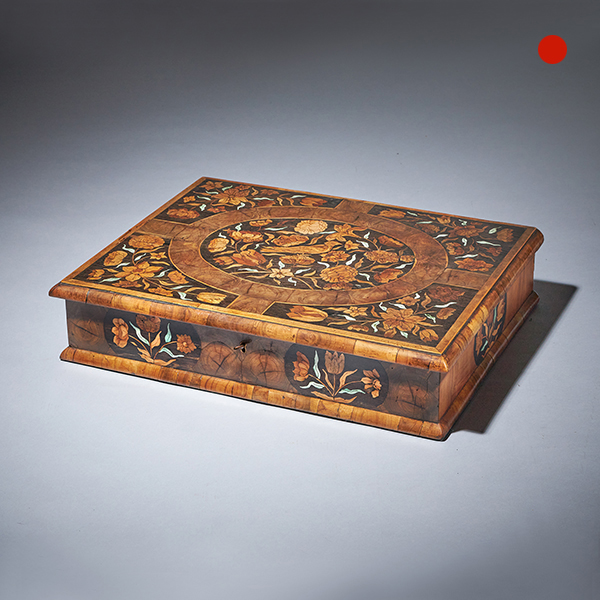
17th Century Museum Grade William and Mary Olive Oyster Marquetry Lace Box
17th Century Museum Grade William and Mary Olive Oyster Marquetry Lace Box Sold Follow Us17th Century Museum Grade William and Mary Olive Oyster Marquetry Lace Box 17th century Museum Grade William and Mary Olive Oyster Marquetry Lace box, C....
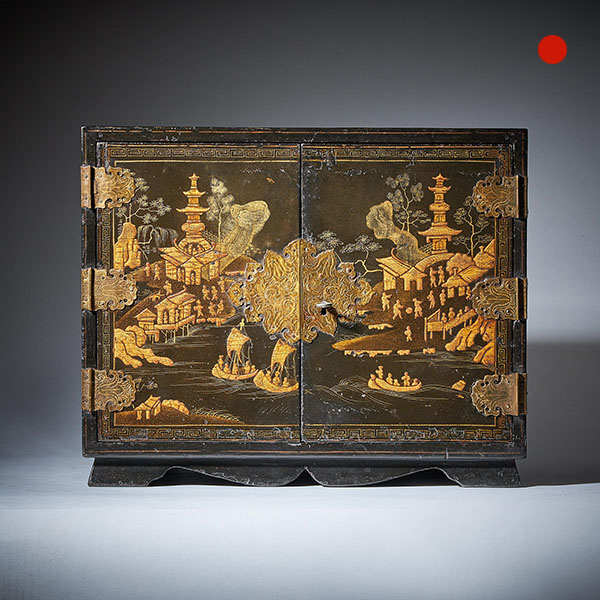
18th Century Chinese Export Lacquer Chinoiserie Table Cabinet
18th Century Chinese Export Lacquer Chinoiserie Table Cabinet SoldFollow Us18th Century Chinese Export Lacquer Chinoiserie Table Cabinet Depicting figurative scenes to all planes and opening on engraved strap hinges to a fitted interior of...
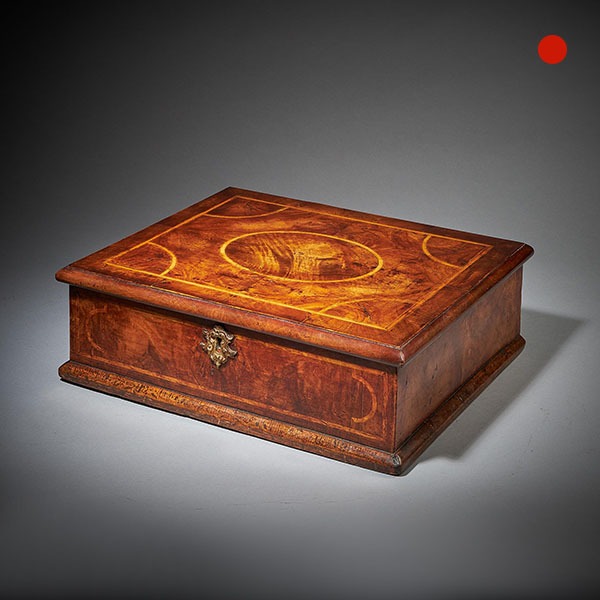
A Rare Figured Walnut Queen Anne – George I Lace Box, circa 1700-1720.
A Rare Figured Walnut Queen Anne - George I Lace Box, circa 1700-1720. SoldFollow UsA Rare Figured Walnut Queen Anne - George I Lace Box, circa 1700-1720. A rare figured walnut Queen Anne - George I period lace box, circa 1700-1720. The...
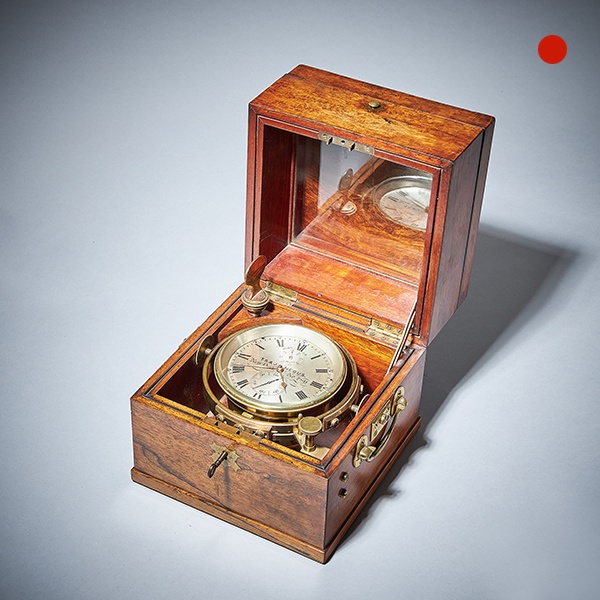
Fine American Two Day Marine Chronometer, Signed T. S & J. D Negus New York
Fine American Two Day Marine Chronometer, Signed T. S & J. D Negus New York SoldFollow UsFine American Two Day Marine Chronometer, Signed T. S & J. D Negus New York A Classic beautifully produced mid-19th century American chronometer...
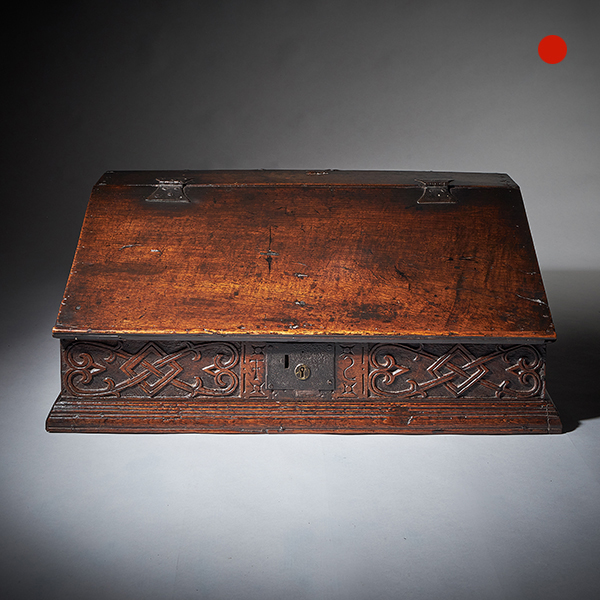
17th Century Charles II Carved Oak Writing Box or Desk Box circa 1660 England
17th Century Charles II Carved Oak Writing Box or Desk Box SoldFollow Us17th Century Charles II Carved Oak Writing Box or Desk Box A rare 17th-century Charles II carved oak writing or desk box, circa 1660. England. The box opens on the...
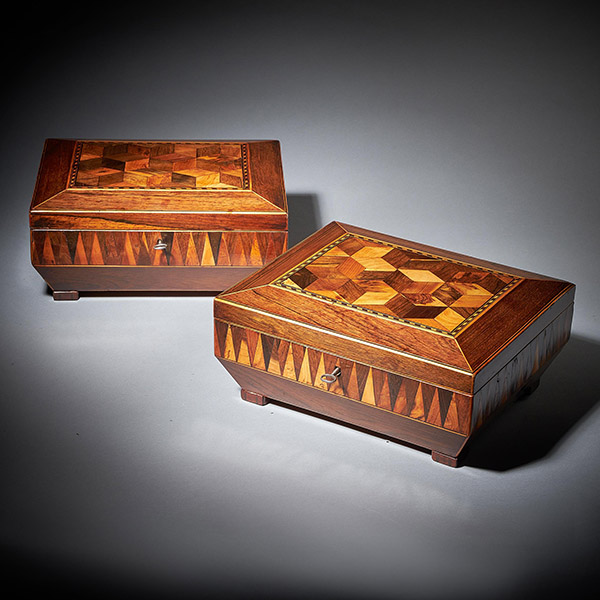
Pair of George IV Regency Specimen Wood Parquetry Boxes of Sarcophagus Shape
Pair of George IV Regency Specimen Wood Parquetry Boxes of Sarcophagus Shape SoldFollow UsPair of George IV Regency Specimen Wood Parquetry Boxes of Sarcophagus Shape An extremely rare and fine pair of George IV Regency exotic timber boxes of...

17th Century Museum Grade William and Mary Olive Oyster Marquetry Lace Box
17th Century Museum Grade William and Mary Olive Oyster Marquetry Lace Box Sold Follow Us17th Century Museum Grade William and Mary Olive Oyster Marquetry Lace Box 17th century Museum Grade William and Mary Olive Oyster Marquetry Lace box, C....

18th Century Chinese Export Lacquer Chinoiserie Table Cabinet
18th Century Chinese Export Lacquer Chinoiserie Table Cabinet SoldFollow Us18th Century Chinese Export Lacquer Chinoiserie Table Cabinet Depicting figurative scenes to all planes and opening on engraved strap hinges to a fitted interior of...

A Rare Figured Walnut Queen Anne – George I Lace Box, circa 1700-1720.
A Rare Figured Walnut Queen Anne - George I Lace Box, circa 1700-1720. SoldFollow UsA Rare Figured Walnut Queen Anne - George I Lace Box, circa 1700-1720. A rare figured walnut Queen Anne - George I period lace box, circa 1700-1720. The...

Fine American Two Day Marine Chronometer, Signed T. S & J. D Negus New York
Fine American Two Day Marine Chronometer, Signed T. S & J. D Negus New York SoldFollow UsFine American Two Day Marine Chronometer, Signed T. S & J. D Negus New York A Classic beautifully produced mid-19th century American chronometer...

17th Century Charles II Carved Oak Writing Box or Desk Box circa 1660 England
17th Century Charles II Carved Oak Writing Box or Desk Box SoldFollow Us17th Century Charles II Carved Oak Writing Box or Desk Box A rare 17th-century Charles II carved oak writing or desk box, circa 1660. England. The box opens on the...

Pair of George IV Regency Specimen Wood Parquetry Boxes of Sarcophagus Shape
Pair of George IV Regency Specimen Wood Parquetry Boxes of Sarcophagus Shape SoldFollow UsPair of George IV Regency Specimen Wood Parquetry Boxes of Sarcophagus Shape An extremely rare and fine pair of George IV Regency exotic timber boxes of...
YOU MAY ALSO LIKE
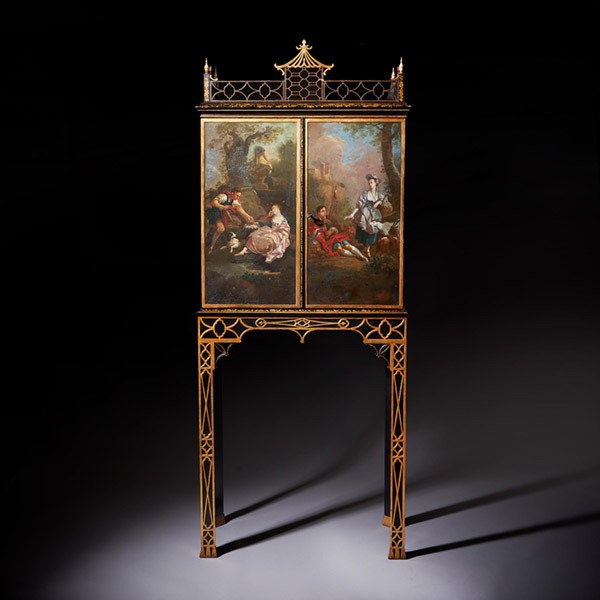
A Rare Chinese Chippendale George III cabinet on stand, circa 1760 England
A Rare Chinese Chippendale George III cabinet on stand, circa 1760. England £38,000Follow UsA Rare...
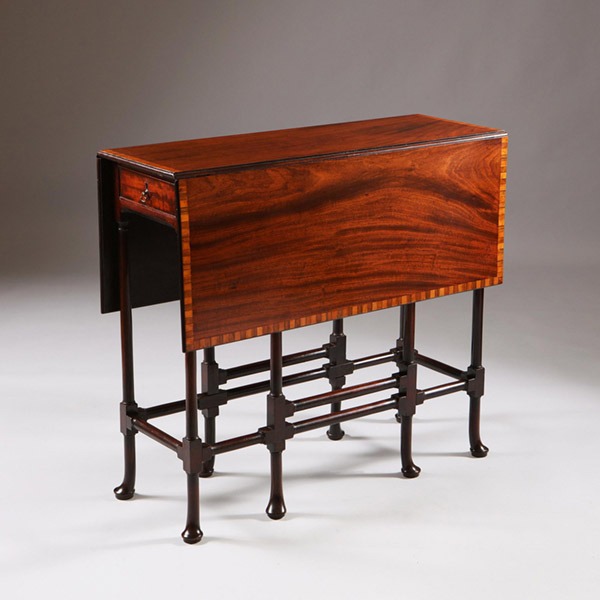
George III mahogany spider-leg table attributed to Thomas Chippendale 1768
A George III mahogany spider-leg table attributed to Thomas Chippendale 1768 £12,000Follow UsA...
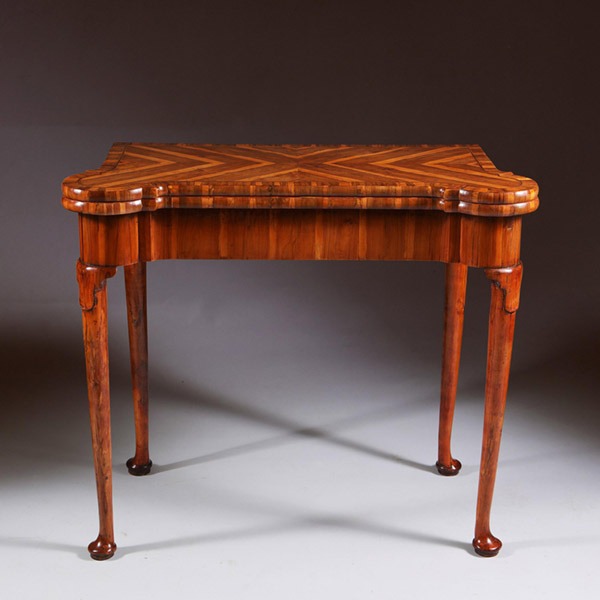
Museum Grade George I Cocus Wood Card Table, Circa 1725, England
Museum Grade George I Cocus Wood Card Table, Circa 1725. England £32,000Follow UsMuseum Grade...
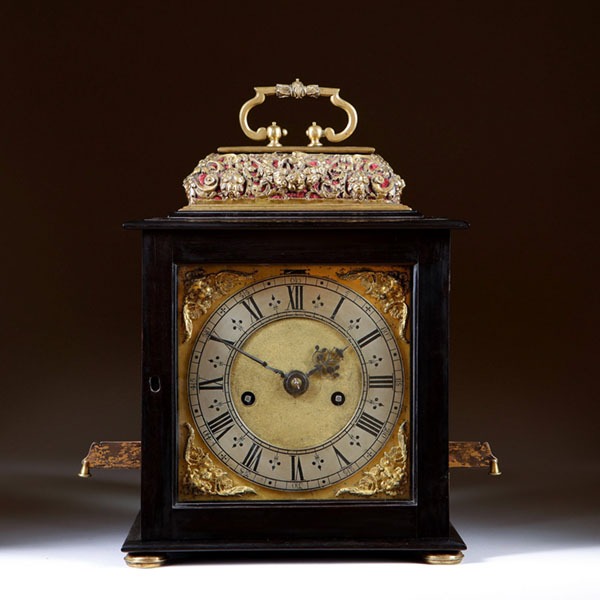
A Rare and Important Charles II 17th Century Table Clock by Henry Jones
A Rare and Important Charles II 17th Century Table Clock by Henry Jones £85,000Follow UsA Rare and...
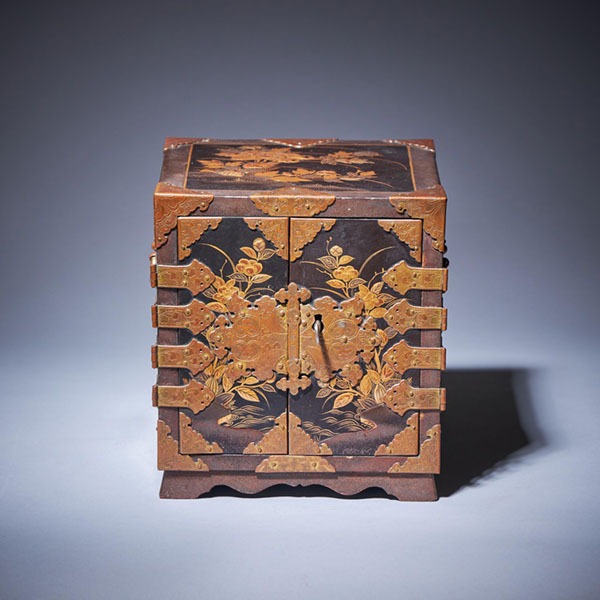
Important Early Edo Period 17th Century Miniature Japanese Lacquer Cabinet
Important Early Edo Period 17th Century Miniature Japanese Lacquer Cabinet £36,000Follow...
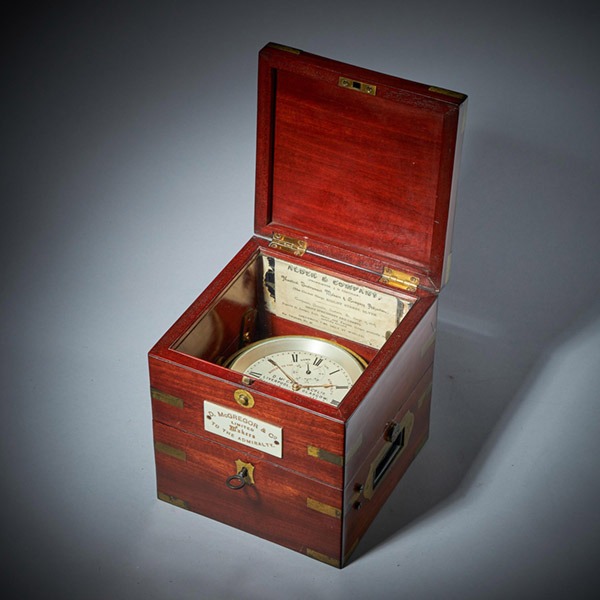
Fine Scottish Two-Day Marine Chronometer Signed and Numbered D. McGregor
Fine Scottish Two-Day Marine Chronometer Signed and Numbered D. McGregor £6,500Follow UsFine...

A Rare Chinese Chippendale George III cabinet on stand, circa 1760 England
A Rare Chinese Chippendale George III cabinet on stand, circa 1760. England £38,000Follow UsA Rare...

George III mahogany spider-leg table attributed to Thomas Chippendale 1768
A George III mahogany spider-leg table attributed to Thomas Chippendale 1768 £12,000Follow UsA...

Museum Grade George I Cocus Wood Card Table, Circa 1725, England
Museum Grade George I Cocus Wood Card Table, Circa 1725. England £32,000Follow UsMuseum Grade...

A Rare and Important Charles II 17th Century Table Clock by Henry Jones
A Rare and Important Charles II 17th Century Table Clock by Henry Jones £85,000Follow UsA Rare and...

Important Early Edo Period 17th Century Miniature Japanese Lacquer Cabinet
Important Early Edo Period 17th Century Miniature Japanese Lacquer Cabinet £36,000Follow...

Fine Scottish Two-Day Marine Chronometer Signed and Numbered D. McGregor
Fine Scottish Two-Day Marine Chronometer Signed and Numbered D. McGregor £6,500Follow UsFine...


